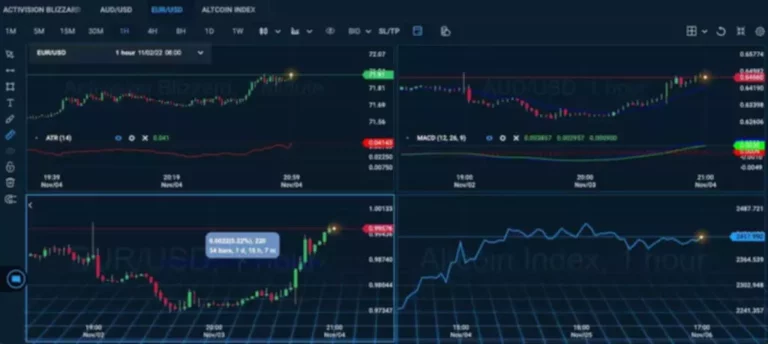02 Aug Defi Fundamentals Articles Cryptopedia
Borrowers must provide collateral in the https://www.xcritical.in/ type of other crypto property, that are sometimes worth greater than the value of the quantity they need to borrow. Hypothetically it provides crypto liquidity to a borrower who could not want to sell the specific crypto assets which are being put up for collateral. As the name suggests, decentralized finance is the other of centralized finance, which is the system we now operate under—at least most people do, most of the time. As quantum computing advances, the cryptographic protections that underpin today’s financial system are in danger. In an open finance ecosystem, lenders can get a better understanding of a consumer’s financial situation. By aggregating shopper data securely and effectively, lenders can choose suitable credit merchandise for potential debtors, audit documentation, and provide personalized options.
Decentralized Finance: Reshaping The Means Ahead For Monetary Services
It might be intriguing to see how the DeFi ecosystem challenges and modifies the conventional Cryptocurrency exchange financial industry, and what new opportunities and innovations come up as a result. DeFi platforms like MakerDAO and AAVE enable users to borrow and lend cryptocurrencies without conventional financial establishments. Borrowers can leverage their cryptocurrency holdings as collateral to acquire loans, whereas lenders earn curiosity on deposited funds. This decentralized lending mannequin offers various funding options, significantly useful in regions with limited banking infrastructure. Customers and thus front-end suppliers want entry to conventional monetary institutions, in the sense of Open Finance, but additionally to peer-to-peer solutions with out intermediaries in the sense of DeFi.
Open Finance And Decentralized Finance (defi): Unveiling A More Empowered Monetary Future
- As quantum computing advances, the cryptographic protections that underpin today’s monetary system are at risk.
- The ‘total worth locked in Defi’, which indicates how much money is at present working in several DeFi protocols, has increased significantly in the final two 12 months.
- The conventional banking and financial sector is being challenged by the rapidly growing field of monetary technology known as “decentralized finance,” or DeFi.
- DeFi platforms incentivize customers to provide liquidity to decentralized liquidity swimming pools by way of yield farming.
CeFi is a time period used to explain conventional financial networks, which rely upon intermediaries to manage assets and facilitate transactions, corresponding to banks or other financial institutions. Decentralized purposes open Finance vs decentralized finance (dApps) on a blockchain community are how people get hold of and supply financial providers instantly through DeFi platforms. Through using blockchain-based digital foreign money, smart contracts can enable trustless transactions that additional empower shoppers. Despite the advantages of both fintech and DeFi, there are inherent challenges that should be overcome. But if emerging projects work collaboratively with incumbent monetary establishments, open finance has the potential to transform the delivery of monetary services all over the world. Financial technology corporations are at the forefront of improving the accessibility and convenience of economic companies.
Insights From Fidelity Wealth Administration
Real-world belongings like gold can now be represented as artificial property, interchangeable with cryptocurrencies like ether on platforms similar to Synthetix. But, with so many platforms competing for shopper consideration, it’s a challenge to delineate open finance from decentralized finance and, importantly, decide which makes the most sense for the individual client. Also, observe that crypto may be more vulnerable to market manipulation than securities, and DeFi platforms could additionally be extra weak to security considerations than centralized finance platforms. Crypto holders and DeFi customers do not profit from the identical regulatory protections relevant to registered securities. Yet this additionally implies that DeFi lacks many of the built-in protections that present centralized finance methods have.
Decentralized Finance (defi) And Challenges To Traditional Financial System
Without technical information of how sensible contracts work, much less skilled customers may be at higher risk of making errors, and the slightest errors could end in dropping access to their property eternally. In addition, yield volatility on certain platforms can doubtlessly result in rapid devaluation of returns. However, while decentralization might provide larger privateness, a major trade-off is that there is regulatory uncertainty, which may result in larger danger of scams and frauds. For instance, smart contracts are a relatively new technology and may probably face technical vulnerabilities. In the last few years, a number of excessive profile DeFi protocols have been hacked for over 9 figures in losses. Skeptics imagine it’s not price putting your monetary belongings on the line assuming these sorts of dangers.
In addition, the concept of tokenized real property on blockchain is pretty new and may create obstacles for consumers and sellers. The property market is extremely regulated and tax buildings could create higher complexity for transactions, especially across totally different geographic regions. As you find out about DeFi, you could come throughout the distinction between centralized finance and decentralized finance. Centralized finance—sometimes known as “CeFi” or “TradFi” by the crypto community—describes the world of traditional banks, brokers, insurers, and bank card corporations. For traditional finance, DeFi, and CBDCs to coexist, they must be capable of communicate and transfer worth throughout each other. Without this functionality, cross-border funds will stay gradual, and multi-system operations will proceed to require expensive handbook reconciliation.

Eliminating intermediaries reduces counterparty risk and enables direct peer-to-peer interactions, democratizing entry to monetary services. In contrast, blockchain know-how forms the premise of DeFi service-based platforms, which transact completely in digital assets. This rapidly expanding ecosystem exists totally on the Ethereum blockchain, with ether (ETH) as the common forex. However, blockchain networks like EOS, TRON, Polkadot, and Cosmos are constructing out DeFi platforms of their very own.
DeFi represents a bold move from conventional financial establishments, enabling peer-to-peer transactions on platforms like Compound, Aave, Uniswap, and SushiSwap. Built on blockchain technology and using good contracts, DeFi provides a stage of financial autonomy, control, and innovation previously unseen. However, despite their potential, these two forces — together with conventional monetary methods — stay disjointed. This fragmentation results in inefficiencies, rising prices, and settlement delays, hindering global monetary connectivity.
Bridging these worlds is not optionally available — it’s essential to create a faster, more secure, and extra inclusive monetary future. While many banking apps remain proprietary, others have taken a collaborative approach with technology-first corporations. This pattern of cooperation between banks and third parties operating within the FinTech and blockchain area is known as open finance. Decentralized finance (DeFi), by giving customers extra energy, transparency, and accessibility over their finances, has the potential to utterly remodel the monetary sector. DeFi platforms have a worldwide attain, do away with middlemen, promote transparency, and allow programmable financing. DeFi continues to be in its early phases of development, however to ensure that it to attain its full potential, a selection of situations must be happy.

Instead, they’re decentralized apps, or dApps, current on a blockchain (usually the Ethereum blockchain), self-contained little programs that fire when agreed-upon conditions are met—that’s the “sensible” bit. Despite the potential, both OpenFin and DeFi face challenges, together with regulatory uncertainties, security concerns, and the necessity for elevated consumer adoption and consciousness. Addressing these issues is essential for these revolutionary monetary models’ continued progress and mainstream acceptance. Use instances of Decentralized Finance (DeFi) are monetary actions performed on blockchain networks with out intermediaries.
Decentralized Finance (DeFi) empowers users to have interaction in monetary transactions with out geographical restrictions or dependence on centralized institutions. DeFi leverages blockchain technology to offer lower fees, greater rates of interest, and transparent transactions by way of sensible contracts. Given DeFi is still in its infancy, utilizing it for giant transactions like actual property might pose sure challenges, together with security risks with good contracts.
Open Finance depends on safe APIs, allowing shoppers to combine their bank accounts with third-party companies, thereby gaining control over their financial data. Although open finance makes knowledge extra readily available, centralized banks and third events are subject to present governance and regulatory necessities. Under the open finance mannequin, banks and third events additionally operate because the custodians of client funds and information with a centralized construction that limits each safety and privateness.



No Comments